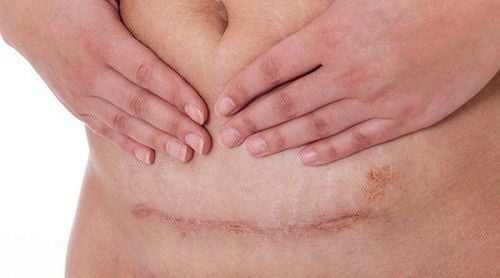This is an automatically translated article.
Cervical suture is a procedure that uses medical sutures to tighten the waist of the uterus, preventing the cervix from dilating too soon. Thereby preventing premature birth, creating favorable conditions for the baby to be nourished in the womb for up to 37 weeks or more. So is cervical suture safe?
1. What is the effect of cervical suture?
Cervical suture is a procedure that uses medical sutures to tighten the waist of the uterus. Cervical waist stitches strengthen the uterus and prevent the cervix from dilating too soon. This procedure helps the pregnancy to be kept longer, enabling the baby to be raised in the womb for up to 37 weeks or more, thereby helping to prevent premature birth.
The isthmus is applied to pregnant women diagnosed with cleft palate and is divided according to the following cases:
Women who have ever given birth prematurely or miscarried in the second trimester of pregnancy without or There are few warning signs such as abdominal pain, vaginal discharge changes, bleeding, etc. This condition occurs in 2 consecutive pregnancies and usually miscarriages occur before 24 weeks of pregnancy. Women with a history of miscarriage in the second trimester and will be screened for uterine height in the next pregnancy, through ultrasound equipment. Ultrasound results show that the length of the cervix is less than 25mm before the 24th week of pregnancy. The condition of the cervix is open like dilation, the cervix is dilated, and the amniotic sac is formed when pregnant women take antenatal care at three middle month of pregnancy.
2. How many weeks is the cervical stitch?
The time of cervical suture is performed between the 12th and 24th week of pregnancy. Most miscarriages due to foreign bodies occur during the first and first trimesters of pregnancy. Therefore, pregnant women need to make sure when doing screening tests, ultrasound to assess fetal foreign bodies in the first trimester before performing the procedure of suturing the uterus.
Besides, the suture of the uterus in the last three months of pregnancy is also not performed, because at this stage, the baby is born prematurely and is still able to live with care at the gynecological facilities. head. If performing the suture procedure at this stage, it will lead to more complications such as rupture of membranes, infection, tear of the cervix, ... Therefore, the best time to carry out cervical suture if indicated is the 12th week to before the 24th week of pregnancy.
3. Method of suturing the waist of the uterus
Is cervical stitch painful? This is a problem that many pregnant women worry about, the procedure is done through the vagina, so it will cause discomfort to the pregnant woman. In addition, cervical suture can be performed through the abdomen, which is a more invasive method and causes pain for the pregnant woman because of the abdominal incision. However, this method is only performed when many previous times have sewn the waist of the uterus, making the cervix scarred.
3.1 Vaginal Waist Stitch There are two methods of Vaginal Waist Stitch: Mc Donald and Shiroodkar. During transvaginal suturing, the doctor inserts an instrument called a speculum into the vagina, which opens the vagina wider and allows the cervix to be clearly seen. Then, use a forceps to grasp the cervix and pull it out to perform the waist stitch. Then, the doctor can apply one of two methods to perform, but the McDonald method is commonly used.
McDonald's Method: During McDonald's surgery, the doctor will use a non-dissolving needle to sew, then use the needle to thread the stitches around the cervix. Next, the thread will be tightened to close the cervix. The shirodkar method: With this method, a small incision is made near the opening of the cervix, where it meets the vaginal parenchyma. Then, use a needle right at the incision to stitch around the cervix. Finally, use another needle to close the incision. 3.2 Suture the cervix through the abdomen This method requires the doctor to make an incision in the abdomen of the pregnant woman. Then, lift the uterus up to get better access to the cervix. Next using sutures will be inserted at the level of the neck in the cervix and force the cervix to close. The uterus will then be placed back into place and the incision will be closed. In addition, the method of suturing the uterus through the abdomen can be performed by laparoscopic method.
4. Is cervical suture safe?
Cervical suture is a safe procedure with very few complications. Some reports have reported that waist stitch complications affect only 6% of cases performed. However, the frequency of complications will be higher if the gestational age is large and there are signs of cervical dilation before suturing. Some complications that can be encountered when sutured cervical isthmus are:
Amniotic membrane rupture Amniotic fluid infection Amniotic membrane infection Cervical tear Sewing in the wrong place Cervical injury Difficult delivery In short, cervical suture The uterus is a method to help prevent preterm birth in women diagnosed with uterine isthmus. However, after suturing the cervix, mothers need to pay attention to closely monitor their own health status. If there are abnormal signs such as vaginal discharge, bleeding, uterine contractions, fever, etc., it is necessary to immediately go to a medical facility for timely examination and treatment.
Please dial HOTLINE for more information or register for an appointment HERE. Download MyVinmec app to make appointments faster and to manage your bookings easily.













